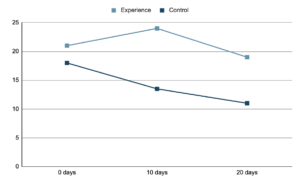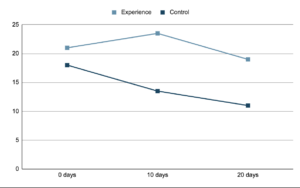
Recent research has been conducted to study the effects of the amino acid complex BCAA IPH AGAA on the speed-strength and morphological indicators of athletes. In this article, we will delve into the goals and objectives of the experiment, as well as discuss the results obtained.
Among the project’s objectives, the following can be noted:
Based on these tasks, various experiments were conducted, and logical conclusions were drawn from the results.
The research was conducted from April to May 2018. This time frame was chosen to coincide with the testing of the peptide complex BCAA IPH AGAA and the training sessions of athletes involved in track and field, specifically, runners. Additionally, athletes participating in decathlon and heptathlon were included in the study.
Specialists developed a cycle of supplement intake and normative testing. Everything was aimed at obtaining the necessary results to assess the effectiveness of the product.
It is worth noting that the experimental group consisted of 10 participants, all of whom were students at the State Budgetary Educational Institution of Moscow Region Center for Sports Preparation of Children and Youth in the city of Kolomna. Among them:
Characterizing the average members of the group, we can draw the following table: It can be concluded that the experimental group consisted of highly qualified athletes
| CHARACTERISTIC FEATURE | ANSWER |
|---|---|
| Number of participants | 10 |
| Types of sports | Athletics, decathlon, powerlifting |
| Gender | Male |
| Age | From 16 to 24 |
| Qualification | From the presented group, 2 masters of sports, 4 candidates for master of sports, and 4 athletes of the first category |
| Sports experience | From 4 to 8 years |
The results of the research were divided into three main groups, each of which provided its own conclusions about specific indicators. Let’s take a closer look at each of these groups.
Before discussing the results, it is necessary to note that both indicators were measured using the Matejko technique modified by T.F. Abramova. Measurements, according to the methodology, were carried out at the beginning of each of the four microcycles throughout the entire experiment.
Based on the research results, it was determined that regular intake of the biologically active supplement BCAA IPH AGAA influenced the increase in the athlete’s muscle mass, indicating an improvement in strength and endurance.
Regarding the second group of athletes, it was found that during the intake of the standard BCAA supplement, an increase in fat mass occurred.
Thus, based on the obtained data, it was easy to conclude that the BCAA IPH AGAA peptide complex performs better in achieving the set goal, exerting an anabolic effect on the athletes’ muscle tissues, leading to an increase in body mass.
Here are the experiment dynamics presented in the table below:
| Indicator | Before the Experiment | Final Results After Course Completion |
|---|---|---|
| Group 1 (BCAA IPH AGAA) | Group 2 (Standard BCAA) | |
| Body Weight, kg | 94.0 | 92.2 |
| 92.4 | ||
| 91.5 | ||
| Muscle Mass: | ||
| – kg | 48.6 | 46.9 |
| 51.6 | 50.0 | |
| 50.7 | 52.8 | |
| 47.2 | 50.5 | |
| Fat Mass: | ||
| – kg | 13.9 | 14.8 |
| 14.7 | 15.5 | |
| 13.0 | 13.2 | |
| 14.4 | 15.0 |
If we create a graph based on the data, it will look as shown in the figure below.

It’s worth mentioning again that one of the objectives of the study was to determine the body’s response to increased loads. The results were assessed based on the following indicators:
According to the results, it was established that the BCAA IPH AGAA supplement had almost no effect on the levels of the hormones considered. Changes occurred, but they were insignificant. In the case of the standard group, a noticeable decrease in testosterone and cortisol was observed.
The tables and graphs also confirm this.
| Indicator | Before the Start of the Experiment | After Completion of the Experiment |
|---|---|---|
| Group 1 (BCAA IPH AGAA) | Group 2 (Standard BCAA) | |
| Total Testosterone, nM/L | 28.7 | 29.8 |
| 25.4 | 16.1 | |
| Cortisol, nM/L | 141 | 179 |
| 137 | 281 | |
| Adaptation Coefficient (T/C) | 0.23 | 0.17 |
| 0.19 | 0.10 |

Thus, it can be concluded that the first group, which consumed the peptide complex BCAA IPH AGAA, adapted to the increased loads during the experiment. The second group did not confirm similar results, as their adaptation coefficient was significantly lower.
Finally, the final testing was conducted to study the influence of the supplements on athletes’ speed and endurance. During the experiments, the results were analyzed based on exercises such as:
The study yielded the following results:
This can be observed in the dynamics table below:
| Exercise | Before the Experiment | After the Experiment |
|---|---|---|
| Group 1 (BCAA IPH AGAA) | Group 2 (Control BCAA) | |
| 30m Running Start (s) | 3.8 | 3.7 |
| Standing Long Jump (m) | 2.7 | 2.8 |
| Triple Jump (m) | 8.5 | 9.2 |
| Shot Put (m) | 16.71 | 17.19 |
| Bench Press (kg) | 90.2 | 95.5 |